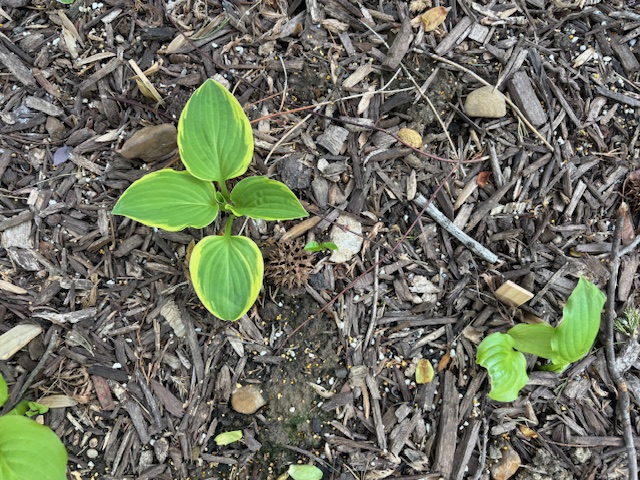Sightseeing on I-64
Views: 4836
-225x300.jpg)
Wonderful Husband and I made a trip to St. Louis last weekend, driving on I-64. Since we’d taken the Spoiled Mutt with us, Wonderful Husband had to drive because Spoiled Mutt insisted on being on my lap. (thank you, Spoiled Mutt!). This meant I had lots of opportunity to look out the window and sightseeing. I got to marvel at the lush green fields, trees and flowers along the way. The near-daily rains have kept everything beautiful – an unusual sight in mid-August. I made a mental game of trying to ID plants I saw while we’re speeding by at 70 miles / hour. (It beats playing “I Spy” or seeing how many blue cars you can count).
Native Flowers
I noticed plants I had not seen blooming along that highway before along the edges of the drainage ditches. Maybe because of the extremely wet summer, countless Swamp Mallow and Purple Ironweed plants were blooming their “fool heads off”. Even from the highway, I spotted Eastern Swallowtail butterflies feasting on the Ironweed while sightseeing.
Both Swamp Mallow (Hibiscus moscheutos) and Purple Ironweed (Vernonia fasciculata) are definite “must haves” natives for a rain garden or at the edge of a water feature.
Swamp Mallow, also called Rose Mallow, Hardy Hibiscus, Swamp Rose Mallow, is a perennial native in the southeastern U.S. Hardy in Zones 4 through 9, it can grow 2 to 8 feet tall, depending on conditions. Although it really does well in full sun in rich soil and moist conditions, it will tolerate part sun and regular garden conditions too. Its exotic, hibiscus blooms are show-stoppers. If you want more blooms, pinch back the tip of the stems to promote side branching and more flowers. The ones I saw along I-64 were white or pale pink, with deep wine colored throats. These beauties attract pollinators and hummingbirds and are spectacular planted in groups. Definitely good for sightseeing! If you’ve got a boggy area in your yard that you’d just about given up on trying to grow anything, try Swamp Mallow.
Ideas for your garden
Cultivars are available, including deep reds, lavender, and magenta. Thanks to the growing popularity of native plants, you can easily buy plants or seeds from nurseries and seed catalogs – just check the internet. They will self-seed and can also be propagated by dividing the crown while the plant is dormant in the winter. You might be able to propagate by cuttings, too.
Purple Ironweed or Prairie Ironweed is another native just irresistible to butterflies. When considering where to plant Ironweed, bear in mind that it can grow to 4 feet tall, likes full sun, and consistently moist soil – just like Swamp Mallow. Until it blooms, you’d be tempted to pull it out like a real weed, so maybe plant it in the background where other plants can hide it until it’s ready to shine. The deep purple blooms are quite attractive from July to September, so it’s a good season extender, providing nectar for the pollinators when most other plants have stopped blooming. Your garden can be someone’s stop while sightseeing!
You can keep its height at a reasonable level by cutting back the stems in late spring, which should also increase the number of blooms. Deadheading the spent blooms will reduce unwanted self-seeding and promote re-blooming. You’ll be glad you planted it – if only for the butterfly show!
Meet Dona Bergman
Dona Bergman is a founding member, Southwest Indiana Chapter of the Indiana Native Plant & Wildlife Society, and an Advanced Master Gardener.







